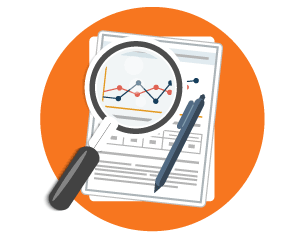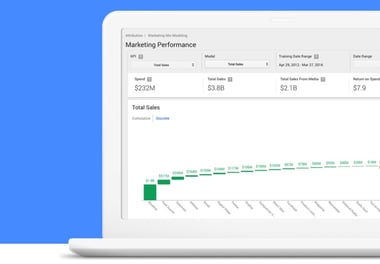 Marketers are obsessed with measuring the success of our content programs and campaigns. As we should be – figuring out what’s working and what isn’t is essential to success. But I’ve noticed that many marketers rely on two flawed measurements -- “First Registration” and “Last Click” -- data points for content marketing and paid advertising campaigns that purport to provide insight but instead serve to mislead.
Marketers are obsessed with measuring the success of our content programs and campaigns. As we should be – figuring out what’s working and what isn’t is essential to success. But I’ve noticed that many marketers rely on two flawed measurements -- “First Registration” and “Last Click” -- data points for content marketing and paid advertising campaigns that purport to provide insight but instead serve to mislead.
The good news is that both can be avoided by moving to an attribution model that measures the total picture. Both Google and HubSpot have analticual offerings that can measure the entire funnel.
First registration and B2B marketing
First registration is something that many business-to-business marketers love to measure. The idea of first registration is to offer up calls-to-action that require somebody to register to gain access to valuable content. It could be a white paper, an email newsletter subscription, or a Webinar. When somebody registers and provides an email address and other contact information, that’s considered the reason that six months or two years down the line they purchased a product.
The problem is that first registration ignores all of the content that people consume before and after they register. They may have watched a dozen videos, and read every blog post published in a year. It’s possible they had been eagerly learning for weeks or months before they registered. Each interaction moved them closer to a sale yet only one data point is measured.
First registration measurement also leads to marketers putting squeeze pages with registration requirements on too much content. I am a big believer in making things free instead.
Consumer advertising, last click attribution, and multi-touch attribution
 Many consumer marketers measure using last click attribution. In fact many online advertisers obsess with this metric. They look at that final digital touch point and then use that as the reason for an ecommerce sale. But like first registration in the B2B world, a last click measurement also gives misleading signals because it ignores the content that had been viewed prior to the last click. A consumer may have looked at dozens of different things before finally making a decision.
Many consumer marketers measure using last click attribution. In fact many online advertisers obsess with this metric. They look at that final digital touch point and then use that as the reason for an ecommerce sale. But like first registration in the B2B world, a last click measurement also gives misleading signals because it ignores the content that had been viewed prior to the last click. A consumer may have looked at dozens of different things before finally making a decision.
Last month, Google announced a new offering called Google Attribution 360, a service that uses a data-driven algorithmic approach to measure the effect each ad has on a conversion.
The Google Attribution Report helps marketers to better understand which marketing efforts are leading to conversions throughout the sales funnel. The report pinpoints the source, page URL, or referrer that contributes to the most conversions. Attribution Reports break down a visitor's journey to discover which channels are driving the most success such as sources that led to the most conversions, pages that contacts visited before converting and blog posts that drive the most visitors to convert.
The art and science of driving new business
My friends over at HubSpot are also doing great work around attribution modeling. What makes the HubSpot attribution modeling offering so interesting to me is that HubSpot uses it extensively in their business, sort of a working marketing laboratory with learning built into HubSpot marketing, sales, and CRM software products.
HubSpot measures everything. They can tell how each of their more than 5,000 blog posts are performing. They could tweak a post (say by swapping out the call to action) and re-measure using an A/B test. All of this constant analysis yields surprises, and clearly show that first registration and last click are flawed.
Marketers at HubSpot always wants to know what content is most likely to aid in getting people through the buying process.
What is the piece of content that got people from “unknown” to “known” (because they filled out a form)? Why did somebody read 20 blog posts and finally on the 21st choose to raise their hands by filling out a form? How did they enter the funnel?
For a particularly interesting stat, 20% of new HubSpot customers over a three year period viewed HubSpot CEO Brian Halligan’s bio page on the HubSpot website. This is obviously an important page in the buyers’ journey as they evaluate the company and its management, but until HubSpot measured for this, they had no idea that the CEOs bio was important content. And by only measuring first attrition or last click they wouldn’t even know!
Measurement is important. But make sure you are measuring the right things!
Disclosure: I am on a HubSpot advisor and use the HubSpot platform for my blog and websites.




